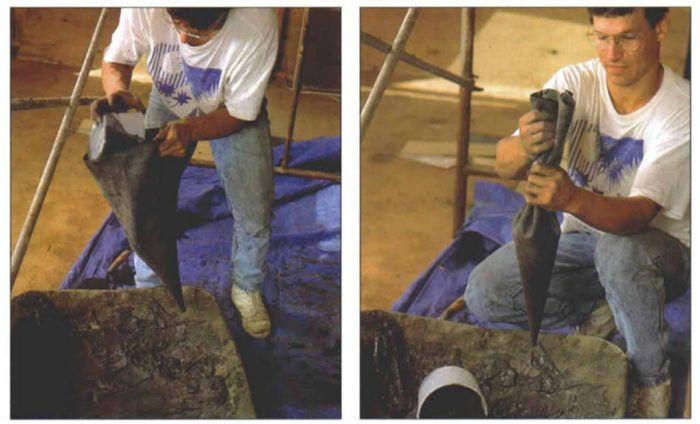Pointing Stonework
A pastry bag speeds this tedious job and gets the work done cleanly and efficiently.

Whether you’re a veteran stonemason or a motivated novice, pointing stonework with a trowel and pointer can be time-consuming, messy and tedious. But you can speed the process and get good results and a neat job by using a pastry bag instead of a trowel.
I used to point my stonework at the end of each day. However, many variables can affect the color of the mortar when you mix it and point on a day-to-day basis. Pointing a bit at a time using a trowel means mixing many different batches of mortar, each of which can have a color that’s a little off from the others. These inconsistencies detract from the ultimate appearance of the stonework.
Pointing with a pastry bag makes the work go much faster. When I use a bag, I mix fewer batches of mortar, so the color of the mortar remains relatively consistent.
Using a pastry bag is cost-effective
You can buy a pastry bag, or grout bag, in most masonry supply stores and in some building-supply stores. The pastry bag is inexpensive (mine cost about $4), but the best thing about using it to fill in joints is that the bag saves a lot of time.
There are other benefits. When you point at the end of a job, you have the option of picking out the mortar color after you see all the stone laid up. My customers enjoy this option because they can change the color they want right up until the day of pointing. If I’m pointing each day with a trowel, the mortar color for the job is set in stone.
The pastry-bag method is economical. Unlike pointing by hand, using the bag results in little waste and less cleanup. Mortar mix delivered through a bag forms a smooth, hard finish, creating a better seal. This is important if the stone is exposed to weather.
Clean stonework is easier to point
The day before I point, I wash the stonework with water and a hard-bristle brush. I take care to rid the joints of any dirt, loose cement or chinks. I also fill any large voids when the stone is dry.
If the joints run consistently 1 in. or larger, I cut a little off the tip of the bag to allow more mortar to flow out, just as I would with a tube of caulk. I don’t use a pastry bag if the average size of the joints is wider than 1 1/2 in.
Mortar should be as thick as pancake batter
Chunks in the mortar can clog the pastry bag, so make sure that the mortar mixer (or the tub and tools if you’re mixing by hand) is clean. The sand used should be clean, too. If necessary, I sift sand through wire lath to filter larger pieces.
For more photos and details, click the View PDF button below:


























